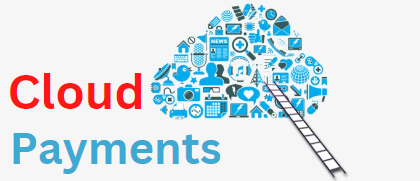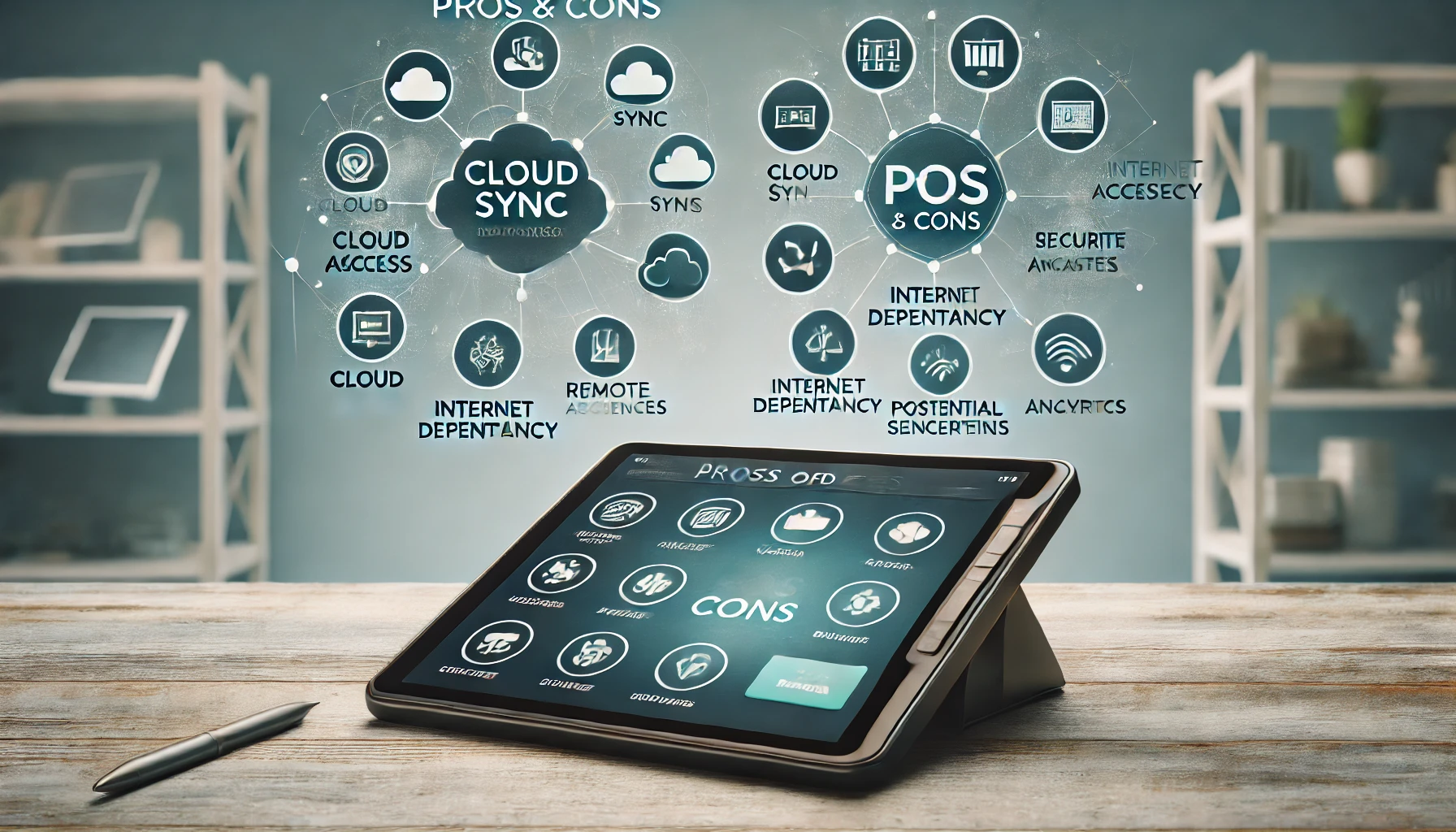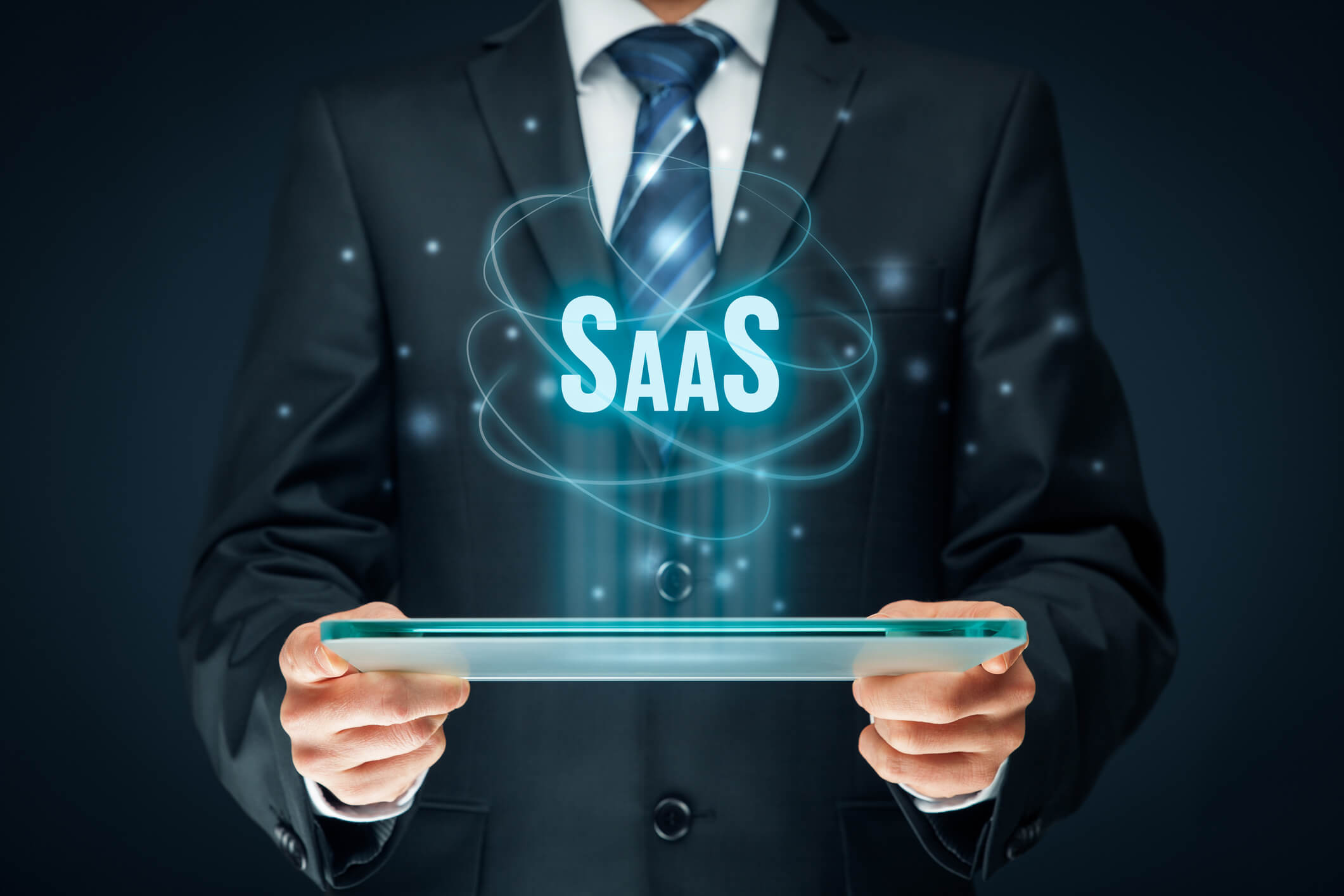Cloud Payments for SaaS Platforms: A Comprehensive Guide
In the rapidly evolving world of Software as a Service (SaaS), offering a seamless payment experience is crucial for maintaining competitive advantage and ensuring customer satisfaction. Cloud payments have emerged as a transformative solution, enabling SaaS platforms to streamline billing processes, enhance security, and expand their global reach. This comprehensive guide delves into the mechanisms, benefits, and considerations of integrating cloud payments into SaaS platforms.
Understanding the concept of cloud payments

Cloud payments refer to the process of accepting and processing payments through the cloud. Instead of relying on traditional payment methods such as cash or checks, cloud payments enable businesses to accept payments electronically, making transactions faster, more convenient, and more secure.
Cloud payments are made possible through the use of payment gateways and processors. These gateways act as a bridge between the SaaS platform and the financial institutions, securely transmitting payment information and authorizing transactions. Payment processors, on the other hand, handle the actual processing of the payments, ensuring that funds are transferred from the customer’s account to the merchant’s account.
Exploring the benefits of using cloud payments for SaaS platforms
There are numerous benefits to using cloud payments for SaaS platforms. Firstly, cloud payments offer enhanced convenience for both businesses and customers. With cloud payments, customers can make payments anytime, anywhere, using their preferred payment method. This flexibility increases customer satisfaction and can lead to higher conversion rates for businesses.
Additionally, cloud payments provide businesses with real-time transaction data and analytics. This data can be used to gain insights into customer behavior, identify trends, and make informed business decisions. By having access to this information, businesses can optimize their pricing strategies, improve customer targeting, and enhance overall profitability.
Furthermore, cloud payments offer enhanced security compared to traditional payment methods. Payment gateways and processors employ advanced encryption and tokenization techniques to protect sensitive customer data. This reduces the risk of data breaches and fraud, providing peace of mind for both businesses and customers.
How Cloud Payments Work for SaaS Platforms
Providing a smooth and secure payment process is paramount. Cloud payments stand at the forefront of revolutionizing how SaaS platforms manage transactions, offering a seamless integration of payment processing into their services.
Explaining the process of cloud payments in SaaS platforms
The process of cloud payments in SaaS platforms typically involves several steps. First, the customer selects the desired product or service on the SaaS platform and proceeds to the checkout page. At this stage, the customer enters their payment information, such as credit card details or bank account information.
Once the payment information is entered, it is securely transmitted to the payment gateway. The payment gateway then encrypts the data and sends it to the payment processor for authorization. The payment processor verifies the customer’s payment details and checks for available funds.
If the payment is authorized, the payment processor sends a confirmation message back to the payment gateway, which in turn notifies the SaaS platform that the payment was successful. The SaaS platform can then provide the customer with access to the purchased product or service.
Discussing the role of payment gateways and processors in cloud payments

Payment gateways and processors play a crucial role in facilitating cloud payments for SaaS platforms. Payment gateways act as a secure bridge between the SaaS platform and the financial institutions, ensuring that payment information is transmitted safely and securely.
Payment processors, on the other hand, handle the actual processing of the payments. They communicate with the customer’s bank or credit card company to verify the payment details and ensure that funds are transferred from the customer’s account to the merchant’s account.
Key Features and Functionality of Cloud Payment Solutions
Cloud payment solutions are reshaping the landscape of digital transactions, providing businesses with a secure, scalable, and efficient way to process payments. This technology is especially critical for platforms operating in the Software as a Service (SaaS) domain, where flexibility and reliability in payment processing are key to customer satisfaction and retention.
Highlighting the essential features of cloud payment solutions for SaaS platforms
Cloud payment solutions for SaaS platforms offer a range of features and functionalities to streamline the payment process. Some key features to look for in a cloud payment solution include:
- Multiple payment methods: A good cloud payment solution should support a variety of payment methods, including credit cards, debit cards, digital wallets, and bank transfers. This ensures that customers have the flexibility to choose their preferred payment method.
- Recurring billing: For SaaS platforms that offer subscription-based services, recurring billing is essential. A cloud payment solution should have the capability to automatically charge customers on a recurring basis, reducing manual effort and improving cash flow.
- Fraud detection and prevention: Security is paramount when it comes to cloud payments. Look for a payment solution that offers robust fraud detection and prevention measures, such as real-time transaction monitoring, address verification, and 3D Secure authentication.
- Integration with accounting software: Seamless integration with accounting software is crucial for efficient financial management. A cloud payment solution that integrates with popular accounting software can automate the reconciliation process and provide accurate financial reporting.
- Customization options: Every SaaS platform is unique, and a good cloud payment solution should offer customization options to match the branding and user experience of the platform. Look for solutions that allow you to customize payment pages, receipts, and email notifications.
Exploring the functionality and integration options available
Cloud payment solutions for SaaS platforms offer a range of functionalities and integration options to enhance the payment process. Some common functionalities to consider include:
- API integration: Application Programming Interface (API) integration allows seamless communication between the SaaS platform and the payment solution. This enables real-time payment processing, automatic updates of payment statuses, and access to transaction data.
- Mobile optimization: With the increasing use of mobile devices, it is essential for a cloud payment solution to be mobile-optimized. This ensures that customers can make payments easily and securely from their smartphones or tablets.
- Multi-currency support: If your SaaS platform caters to an international audience, multi-currency support is crucial. Look for a payment solution that can handle multiple currencies and provide real-time currency conversion rates.
- Reporting and analytics: Detailed reporting and analytics capabilities are essential for gaining insights into payment trends, customer behavior, and overall business performance. Look for a payment solution that offers comprehensive reporting features, such as transaction summaries, sales reports, and customer analytics.
Choosing the Right Cloud Payment Solution for Your SaaS Platform
Selecting the appropriate cloud payment solution is critical for sustaining growth, enhancing customer satisfaction, and maintaining a competitive edge. The right cloud payment platform can streamline your billing processes, ensure secure transactions, and provide the flexibility needed to adapt to changing market demands.
Factors to consider when selecting a cloud payment solution
When selecting a cloud payment solution for your SaaS platform, there are several factors to consider:
- Security: Security should be a top priority when choosing a payment solution. Look for solutions that are Payment Card Industry Data Security Standard (PCI DSS) compliant and offer advanced security features such as encryption, tokenization, and fraud detection.
- Scalability: As your SaaS platform grows, your payment solution should be able to scale with your business. Look for solutions that can handle increasing transaction volumes and support additional features and functionalities as your needs evolve.
- Integration capabilities: Seamless integration with your SaaS platform is crucial for a smooth payment process. Look for solutions that offer easy integration options, such as API integration or pre-built plugins for popular SaaS platforms.
- Pricing and fees: Consider the pricing structure and fees associated with the payment solution. Look for transparent pricing models and compare the fees charged for transactions, chargebacks, and other services.
- Customer support: Reliable customer support is essential when it comes to payment solutions. Look for providers that offer 24/7 customer support and have a reputation for providing prompt and helpful assistance.
Comparing different providers and their offerings
There are numerous cloud payment solution providers available in the market, each offering different features and functionalities. It is essential to compare the offerings of different providers to find the one that best suits your specific needs.
Consider factors such as the provider’s reputation, customer reviews, and the range of features offered. Look for providers that have experience working with SaaS platforms and can provide case studies or testimonials from satisfied customers.
Implementing Cloud Payments in Your SaaS Platform
Integrating cloud payment solutions into your SaaS platform can be a straightforward process if done correctly. Here is a step-by-step guide to help you through the implementation process:
- Assess your requirements: Before selecting a payment solution, assess your specific requirements. Consider factors such as the types of payments you need to accept, the currencies you need to support, and any specific features or functionalities you require.
- Select a payment solution: Based on your requirements, select a cloud payment solution that best meets your needs. Consider factors such as security, scalability, integration capabilities, and pricing.
- Set up a merchant account: To accept payments, you will need to set up a merchant account with a payment processor. This account will enable you to receive funds from customer transactions. The payment solution provider can guide you through this process.
- Integrate the payment solution: Once you have selected a payment solution and set up a merchant account, it’s time to integrate the payment solution into your SaaS platform. This typically involves adding code snippets or using API integration to connect your platform with the payment solution.
- Test the integration: Before going live, thoroughly test the integration to ensure that payments are processed correctly and that all features and functionalities are working as expected. Test different payment scenarios and ensure that the payment solution is seamlessly integrated into your platform.
- Go live: Once you are satisfied with the testing, it’s time to go live. Make sure to communicate the availability of the new payment options to your customers and provide any necessary instructions or support.
Best practices for a seamless implementation process
To ensure a seamless implementation process, consider the following best practices:
- Plan ahead: Proper planning is crucial for a successful implementation. Clearly define your requirements, set realistic timelines, and allocate resources accordingly.
- Communicate with stakeholders: Keep all relevant stakeholders, such as your development team, customer support team, and marketing team, informed about the implementation process. Ensure that everyone understands their roles and responsibilities.
- Test thoroughly: Thoroughly test the integration before going live. Test different payment scenarios, simulate various customer journeys, and ensure that all features and functionalities are working as expected.
- Provide clear instructions: Communicate the availability of the new payment options to your customers and provide clear instructions on how to use them. Make sure that your customer support team is well-equipped to handle any queries or issues related to the new payment options.
- Monitor and optimize: Once the implementation is complete, continuously monitor the payment process and gather feedback from customers. Use this feedback to identify areas for improvement and optimize the payment experience.
Ensuring Security and Compliance in Cloud Payments
Where online transactions have become the backbone of the global economy, ensuring the security and compliance of cloud payments is paramount. This is especially true for Software as a Service (SaaS) platforms, which rely on these transactions for recurring revenue. The integrity of cloud payment systems is crucial, not just for the protection of sensitive financial information but also for maintaining trust with customers.
Understanding the security measures in place for cloud payment solutions
Security is a top concern when it comes to cloud payments. Cloud payment solutions employ various security measures to protect sensitive customer data and ensure secure transactions. Some common security measures include:
- Encryption: Payment information is encrypted during transmission to prevent unauthorized access. Look for solutions that use industry-standard encryption protocols, such as Secure Sockets Layer (SSL) or Transport Layer Security (TLS).
- Tokenization: Tokenization replaces sensitive payment data with unique tokens. These tokens are used for transaction processing, while the actual payment data is securely stored by the payment solution provider. This reduces the risk of data breaches and minimizes the amount of sensitive data stored on your SaaS platform.
- Fraud detection and prevention: Payment solutions employ advanced fraud detection and prevention techniques to identify and prevent fraudulent transactions. These techniques include real-time transaction monitoring, address verification, and 3D Secure authentication.
- PCI DSS compliance: Payment Card Industry Data Security Standard (PCI DSS) compliance is a set of security standards that all businesses accepting card payments must adhere to. Look for payment solutions that are PCI DSS compliant to ensure that your payment process meets the highest security standards.
Compliance requirements and regulations to consider
In addition to PCI DSS compliance, there are other compliance requirements and regulations to consider when implementing cloud payments in your SaaS platform. These may include:
- General Data Protection Regulation (GDPR): If your SaaS platform operates in the European Union or handles personal data of EU citizens, you must comply with the GDPR. This regulation governs the collection, storage, and processing of personal data and imposes strict requirements on data protection and privacy.
- Payment Services Directive 2 (PSD2): PSD2 is a European Union directive that aims to enhance the security and efficiency of electronic payments. It introduces Strong Customer Authentication (SCA) requirements, which mandate additional authentication measures for certain types of transactions.
- Anti-Money Laundering (AML) regulations: AML regulations are designed to prevent money laundering and the financing of terrorism. Depending on your jurisdiction, you may be required to implement AML measures, such as customer due diligence and transaction monitoring.
It is essential to stay updated on the latest compliance requirements and regulations in your jurisdiction and ensure that your cloud payment solution is compliant with these regulations.
Optimizing Cloud Payments for Better User Experience
The user experience (UX) of cloud payment systems has become a critical factor for success, particularly for Software as a Service (SaaS) platforms. A smooth, intuitive payment process not only enhances customer satisfaction but also plays a significant role in reducing churn and increasing conversions.
Tips and strategies to enhance the user experience with cloud payments
A seamless and user-friendly payment experience is crucial for customer satisfaction and conversion rates. Here are some tips and strategies to enhance the user experience with cloud payments:
- Simplify the checkout process: Streamline the checkout process by minimizing the number of steps required to complete a payment. Avoid asking for unnecessary information and provide clear instructions at each stage of the process.
- Offer guest checkout: Not all customers want to create an account or log in to make a payment. Offering a guest checkout option allows customers to make a payment without the need for registration, reducing friction and improving conversion rates.
- Provide multiple payment options: Different customers have different preferences when it comes to payment methods. Offer a variety of payment options, such as credit cards, debit cards, digital wallets, and bank transfers, to cater to a wider audience.
- Optimize for mobile devices: With the increasing use of smartphones and tablets, it is crucial to optimize your payment process for mobile devices. Ensure that your payment pages are mobile-responsive and provide a seamless experience across different screen sizes.
- Enable one-click payments: One-click payments allow returning customers to make a payment with a single click, without the need to re-enter their payment information. This reduces friction and improves the overall user experience.
Exploring customization options and user-friendly interfaces
Customization options and user-friendly interfaces are essential for creating a seamless and branded payment experience. Look for payment solutions that offer customization options, such as the ability to customize payment pages, receipts, and email notifications.
A user-friendly interface is crucial for guiding customers through the payment process. Ensure that the payment solution you choose provides a clean and intuitive interface that is easy to navigate. Consider factors such as the layout, color scheme, and placement of elements to create a visually appealing and user-friendly payment experience.
Latest Trends and Innovations in Cloud Payments for SaaS Platforms
The evolution of cloud payments has been nothing short of revolutionary, significantly transforming how Software as a Service (SaaS) platforms manage transactions. This progression is fueled by the need for more efficient, secure, and user-friendly payment solutions. Let’s delve into the latest trends and innovations shaping the future of cloud payments in the SaaS industry.
Seamless Integration
One of the most significant trends is the move towards seamless integration of payment solutions within SaaS platforms. Modern cloud payment technologies are now designed to integrate effortlessly with a wide range of SaaS applications, enabling businesses to offer more cohesive and user-friendly experiences. This integration not only simplifies the payment process for end-users but also streamlines backend operations, reducing the complexity and cost of managing transactions.
Enhanced Security Measures
Security remains a paramount concern in the digital transaction space. The latest cloud payment solutions are incorporating advanced security features, such as end-to-end encryption, tokenization, and multi-factor authentication. These measures significantly mitigate the risk of data breaches and fraud, ensuring that both SaaS providers and their customers can transact with confidence. Furthermore, compliance with global standards like PCI DSS is being integrated into these solutions, making it easier for businesses to adhere to stringent regulatory requirements.
Artificial Intelligence and Machine Learning
Artificial Intelligence (AI) and Machine Learning (ML) are playing pivotal roles in the evolution of cloud payment technologies. AI and ML algorithms are being used to enhance fraud detection mechanisms, predict payment behaviors, and offer personalized payment experiences. These technologies can analyze vast amounts of transaction data to identify suspicious activities and prevent fraud before it occurs, ensuring a safer payment environment for all stakeholders.
Blockchain Technology
Blockchain technology is emerging as a powerful tool for ensuring transparency and security in cloud payments. By leveraging decentralized ledgers, blockchain-based payment solutions offer unparalleled security, reduced costs, and faster transaction times compared to traditional methods. This technology is particularly beneficial for cross-border transactions, where it can help minimize fees and simplify the settlement process.
Subscription-based Models
As SaaS platforms increasingly adopt subscription-based models, cloud payment technologies are evolving to support recurring billing and subscription management. Modern payment solutions offer flexible billing cycles, proration, and easy subscription upgrades or downgrades. These features help SaaS providers enhance customer satisfaction by offering more tailored subscription options and simplifying the management of recurring payments.
Mobile Payment Integration
The proliferation of smartphones has led to a surge in mobile payments. Cloud payment solutions are now focusing on optimizing mobile payment processes, offering features like in-app purchases, mobile wallets, and one-click payments. This trend is particularly important for SaaS platforms targeting consumers and businesses that rely heavily on mobile devices for their operations.
FAQ’s
Q.1: What are cloud payments for SaaS platforms?
Cloud payments refer to the processing of payments over internet-based infrastructure, enabling SaaS platforms to manage subscriptions, one-time purchases, and other transactions without the need for traditional, physical payment processing systems. This approach leverages cloud technology for scalability, security, and efficiency.
Q.2: How do I integrate cloud payment services into my SaaS platform?
Integrating cloud payment services typically involves selecting a cloud payment provider and using their API (Application Programming Interface) to integrate payment processing capabilities into your platform. Most providers offer comprehensive documentation and SDKs (Software Development Kits) for various programming languages to streamline this process.
Q.3: What are the main benefits of using cloud payments for my SaaS platform?
The main benefits include scalability, as cloud payments can easily adjust to handle increasing transaction volumes; security, with encryption and compliance standards like PCI DSS (Payment Card Industry Data Security Standard) inherently managed; and flexibility, offering various payment methods and currencies to accommodate global customers.
Q.4: How secure are cloud payment solutions for SaaS platforms?
Cloud payment solutions prioritize security, employing encryption, tokenization, and strict compliance with international standards like PCI DSS to protect sensitive data. Providers also implement additional measures such as fraud detection algorithms and regular security audits.
Q.5: Can cloud payments handle recurring billing for my SaaS subscriptions?
Yes, most cloud payment providers offer robust recurring billing features designed for SaaS models. These include automatic renewals, customizable billing cycles, proration, and easy cancellation processes, providing a seamless experience for both the platform and its users.
Q.6: What should I consider when choosing a cloud payment provider for my SaaS platform?
Key considerations include compatibility with your business model (e.g., subscription vs. one-time payment), support for required payment methods and currencies, integration ease and support, fee structure, and the provider’s reputation for reliability and customer service.
Conclusion
In conclusion, as the digital economy continues to expand, the integration of cloud payments into SaaS platforms represents more than a technological upgrade; it symbolizes a commitment to excellence, innovation, and customer satisfaction. As we look to the future, the ongoing advancements in cloud payment solutions will undoubtedly play a crucial role in shaping the success and resilience of SaaS platforms worldwide. In this era of digital acceleration, embracing cloud payments is not just an option but a strategic imperative for SaaS platforms aiming to thrive and leave a lasting impact in the competitive digital marketplace.











